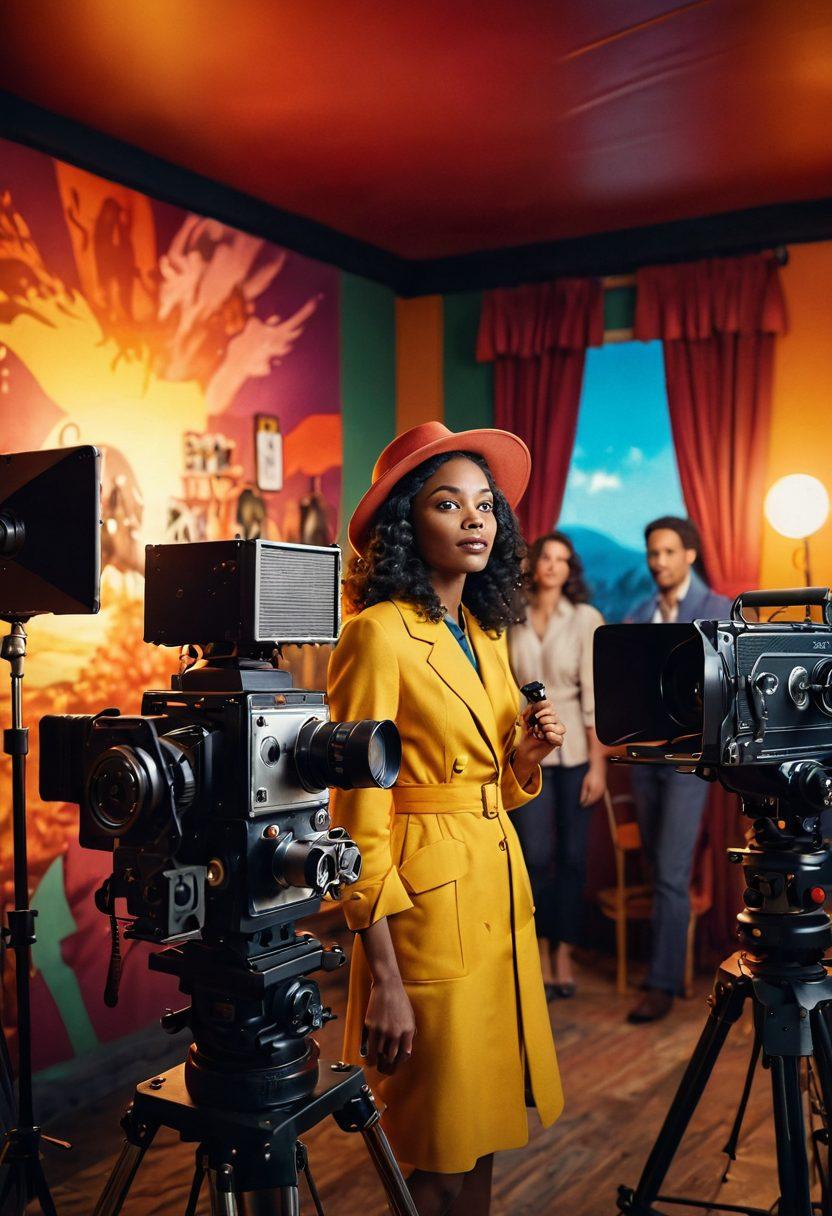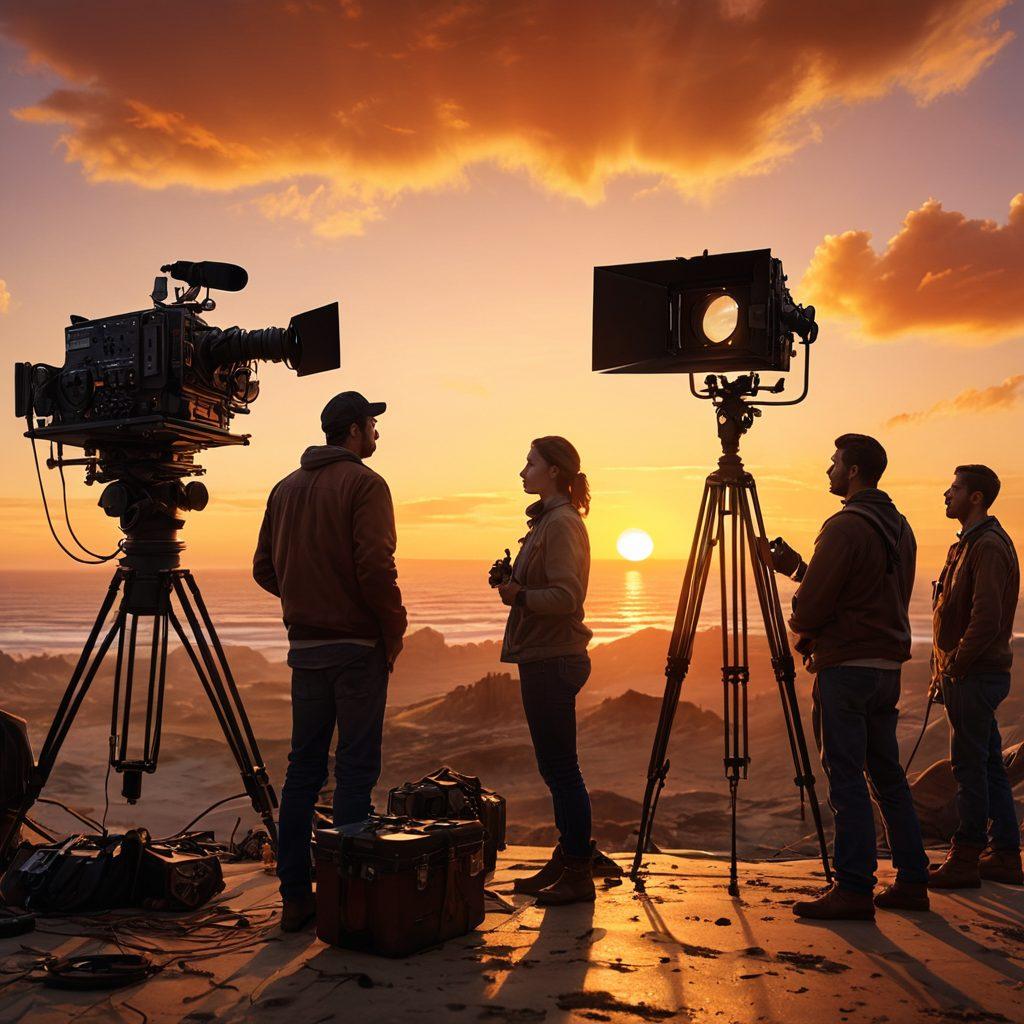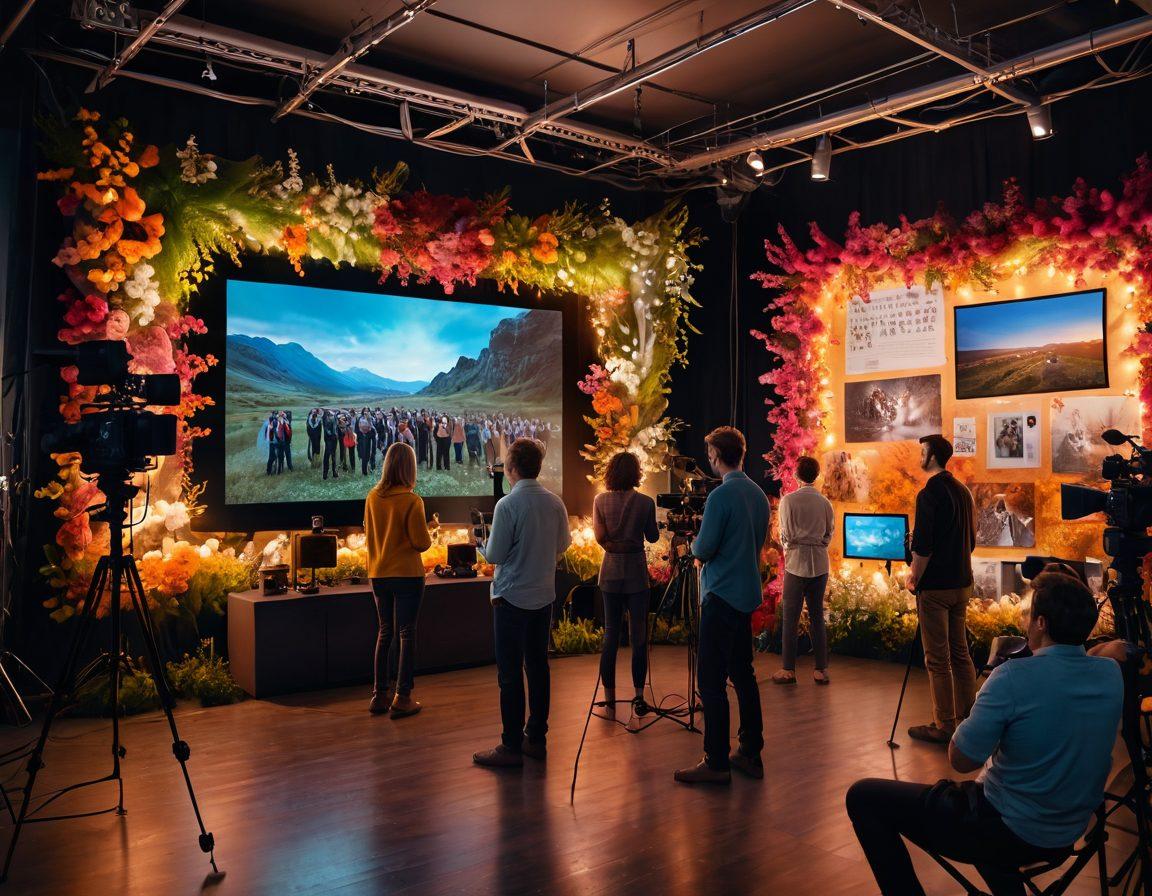Crafting Joyful Stories: The Art of Cinematography in Filmaking
In the world of movie-making, there's an undeniable magic that happens behind the lens that brings stories to life - and that magic largely resides in the art of cinematography. Have you ever watched a blockbuster and felt utterly delighted? Those breathtaking scenes and thrilling action sequences didn't just spring from nothing; they were crafted by talented cinematographers who transform scripts into visual spectacles. The marriage of storytelling and visual arts propels us into different worlds, inviting us to experience drama, laughter, and tears as if we were part of the story ourselves.
Cinematography is not just about capturing beautiful images; it’s about enhancing the narrative of a feature film or short film. It dictates the mood, conveys emotions, and tells a story without a single word. Imagine this: a serene landscape shot fading into a dimly lit alleyway can speak volumes about the journey a character undertakes. The thoughtful choice of lighting, angles, and colors guides the audience through a range of feelings, rendering each scene an integral part of a cohesive narrative. Aren't we all captivated by those cinema moments that stay etched in our minds, forever changing the way we perceive the world?
When you think of filmmaking, who do you picture at the helm? The director? The actors? Of course, they are crucial, but the cinematographer weaves their art into the tapestry of the film. They're the unsung heroes in the thrilling world of cinema, breathing life into the screenplay with each carefully framed shot. As they cooperate with filmmakers to bring their vision to life, their expertise impacts all genres—from heartwarming documentaries to vibrant animations, each scene intricately designed to engage and immerse the viewer. Can you recall a moment in a movie where the visual storytelling made your heart race or brought tears to your eyes? That’s the power of cinematography at work!
Creating a captivating spectacle involves more than just technical skills; it requires passion and an understanding of the audience’s emotions. Cinematographers must dive deep into the psyche of both the characters and viewers. Joyful moments need luminous lighting and fun angles, while intense scenes call for tight shots and dramatic shadows. Is it any wonder that a powerful cinematographer is an indispensable ally to the director? Together, they collaborate, brainstorm, and experiment to conjure up a mesmerizing realm that tells their story as it was meant to be told. Imagine the thrill of watching your ideas come alive on the big screen—and that’s just a taste of what it means to be immersed in this creative process!
So, the next time you're nestled in a theater or cozied up at home, experiencing a film that moves your soul, remember the unsung artists whose work you might take for granted. The power of cinematography to transform an everyday narrative into something extraordinary is what keeps movie-goers captivated. Whether it’s an action-packed sequence in a blockbuster or the subtle play of shadows in a heartfelt drama, each scene is a testament to the magic of cinematography. What stories will you go on to tell through this beautiful art? What joys and truths might await in your own cinematic adventures? As audiences, we can all celebrate the storytellers and their craft by recognizing the artistry that fuels our love for film.
Crafting Emotion: The Role of Cinematography in Enriching Film Narratives
Every film tells a story, but have you ever stopped to wonder what elevates that story from simply good to absolutely unforgettable? That’s where the art of cinematography comes into play! As a filmmaker, you know that the visual elements of a film craft emotions that resonate deeply with the audience. From the opening scene of a blockbuster to the nuanced shot in a heartwarming short film, cinematography shapes how viewers experience the narrative. Picture this: a sweeping landscape slowly zooms in on a character’s tearful face. What emotions does that evoke? This is the magic of cinematography!
As we delve into the enchanting world of storytelling, one can't help but notice how the visual arts complement the screenplay to build an emotional bridge between the film and its audience. Imagine watching an animated feature film where vibrant colors burst onto the screen, instantly captivating your imagination. Or consider a poignant documentary that illustrates human struggles through stark imagery. The role of the cinematographer is akin to that of a conductor, orchestrating light and shadow to evoke delight and empathy, while also guiding the audience through the peaks and valleys of drama and action.
Cinematography in film-making isn’t just about capturing moving images; it’s about crafting emotions that enrich the narrative and transport the viewer into a different world. Think of the countless production decisions made before a single frame is shot. Does the director want a close-up to create intimacy or a wide shot to fill the screen with spectacle? These choices result in powerful storytelling that engages the audience on multiple levels, ensuring they feel joy, sorrow, or love. “Cinematography is the language of visual storytelling,” and it’s a language that every filmmaker aspires to master.
Let’s not forget the impact of cinematography in different genres. Whether it’s a pulse-pounding action scene in a blockbuster that keeps you on the edge of your seat or a soft-lit moment of reflection in a drama that allows you to feel the weight of a character’s grief, each shot is meticulously crafted to elicit a specific emotion. When you utilize different techniques, be it lighting, framing, or color grading, you have the ability to transform even the simplest moments into breathtaking experiences that delight audiences and resonate long after the credits roll.
As you embark on your next filming adventure, remember that every scene is an opportunity for exploration and creativity. Your understanding of cinematography can turn a mundane moment into a magical experience. Ask yourself: How can I make this scene more engaging? What emotional response do I want to elicit from my audience? By integrating these aspects into your filmography, you’ll create captivating narratives that not only entertain but also leave a lasting impact. Cinematography may often go unnoticed, but in truth, it is the heart of storytelling that crafts emotions and enriches the audience's experience.
From Script to Screen: The Essential Techniques for Joyful Storytelling in Cinema
From the glimmer of an idea to the resounding applause of a captivated audience, the journey of filmmaking is nothing short of magical. Imagine crafting such a story that your viewers leave the theater with hearts full of joy. This is the essence of joyful storytelling in cinema, which spans from script to screen, ensuring every frame delights the audience. So, what makes a film transition from a mere concept to a blockbuster hit? It begins with the essential techniques of cinematography, which not only capture actions but also harness the emotional essence of every scene.
Every successful filmmaker knows that storytelling is an art, and joyful storytelling is a focused craft. In a feature film, the screenplay outlines the action, dialogue, and character arcs that bring the narrative to life. However, a screenplay is just the beginning; it is the visual arts of cinematography that breathe life into these words. The director, in collaboration with the cinematographer, will choose the right angles, lighting, and shot compositions to transform an ordinary moment into a cinematic spectacle. How does visual framing impact the emotional journey of the audience? This is the cornerstone of joyful storytelling—creating visual delight amidst drama and action.
Consider the exhilarating opening scene of a movie that grabs your attention. This is achieved through precise planning and advanced techniques in cinematography, where every frame is meticulously crafted to create an engaging experience. For instance, playful camera movements can deliver a comic relief, while warm color palettes can evoke a sense of nostalgia. The aim is to evoke emotions that resonate with the audience, irrespective of whether it’s a short film or a sprawling documentary. Are you as a filmmaker ready to explore the various techniques that can add richness to your storytelling?
Filmmakers often turn to various genres to amuse their audiences. From animated features that fool us into believing in magic to gripping dramas that present the best and worst of humanity, each genre requires smart and entertaining execution. But what ties them together? It’s the director's vision and the cinematography that realizes it, ensuring each scene captivates viewers. When these elements align, the result is an explosive cocktail of joy that keeps the audience delighted long after the credits roll. Who doesn't love that feeling of leaving the theater with a smile, eager to share their experience with others?
The evolution of filmmaking over the years has introduced new technologies and techniques that make it easier for filmmakers to achieve their vision. With the rise of digital media and advances in production, filmmakers now have unprecedented tools in their hands. This democratization of filmmaking means that aspiring directors can bring their joyful stories to life, irrespective of budget constraints. Whether you're embarking on a feature film or a short film, remember: your story is what connects with the heart of your audience. What's stopping you from picking up that camera and giving it a shot? The world is waiting for your joyful stories!


